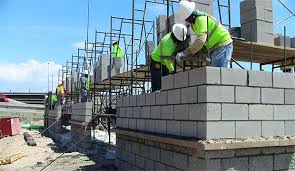
The construction industry is undergoing a transformative renovation services phase characterized by rapid technological advancements, sustainability demands, and evolving methodologies. As we step into the future, understanding the key innovations and trends reshaping the construction landscape is crucial for stakeholders aiming to stay ahead in this competitive field.
Technological Innovations
1. Building Information Modeling (BIM)
Building Information Modeling (BIM) has revolutionized the way construction projects are planned and executed. BIM involves creating and managing digital representations of physical and functional characteristics of places. This technology enhances collaboration among architects, engineers, and construction professionals, resulting in increased efficiency, reduced errors, and significant cost savings. With BIM, complex structures can be visualized in a virtual environment, allowing for better planning and problem-solving before actual construction begins.
2. 3D Printing
3D printing is making waves in the construction industry with its ability to produce building components quickly and cost-effectively. This technology enables the creation of complex designs that would be challenging or impossible to achieve with traditional construction methods. 3D printing also minimizes material waste and labor costs, making it an environmentally friendly and economically viable option for building homes and infrastructure.
3. Drones
Drones are becoming indispensable tools on construction sites. They provide aerial views and real-time data, allowing for accurate site surveys, monitoring progress, and ensuring safety compliance. Drones can quickly and efficiently capture high-resolution images and videos, enabling project managers to make informed decisions and identify potential issues before they become costly problems.
Sustainable Construction Practices
1. Green Building Materials
The push towards sustainability is leading to the development and use of green building materials. These materials are environmentally friendly, often recycled or renewable, and have a lower carbon footprint compared to traditional building materials. Examples include bamboo, recycled steel, and low-VOC (volatile organic compounds) paints. Using these materials not only reduces environmental impact but also promotes healthier indoor environments.
2. Energy-Efficient Building Designs
Energy efficiency is a paramount concern in modern construction. Buildings are being designed to minimize energy consumption through advanced insulation, energy-efficient windows, and the integration of renewable energy sources such as solar panels and wind turbines. Smart building systems that automatically adjust lighting, heating, and cooling based on occupancy and weather conditions are also becoming standard, further reducing energy usage and costs.
Trends Shaping the Industry
1. Modular Construction
Modular construction is gaining popularity due to its speed and efficiency. This method involves constructing building sections, or modules, in a factory setting and then assembling them on-site. Modular construction reduces build time, minimizes waste, and often results in higher quality due to the controlled manufacturing environment. It is particularly useful for residential buildings, schools, and healthcare facilities where rapid deployment is essential.
2. Urbanization and Smart Cities
The global trend towards urbanization is driving the development of smart cities. These urban areas utilize digital technology and data to improve infrastructure, services, and overall quality of life. In the context of construction, this means integrating smart grids, intelligent transportation systems, and sustainable urban planning. Smart cities aim to create more efficient, sustainable, and livable urban environments.
3. Workforce Challenges and Automation
The construction industry faces significant workforce challenges, including labor shortages and an aging workforce. Automation and robotics are emerging as solutions to these problems. Robots can perform repetitive and hazardous tasks, improving safety and efficiency. Automation in construction not only addresses labor shortages but also enhances productivity and project quality.
Conclusion
The future of construction is being shaped by technological advancements, sustainable practices, and evolving industry trends. Embracing these changes is essential for construction companies to remain competitive and meet the growing demands of modern society. From BIM and 3D printing to green building materials and smart cities, the construction industry is on the cusp of a new era, promising a more efficient, sustainable, and innovative future.
